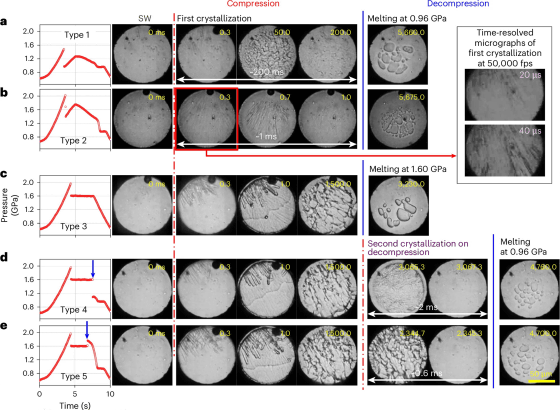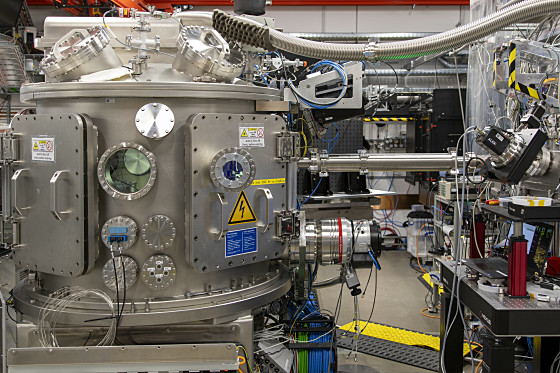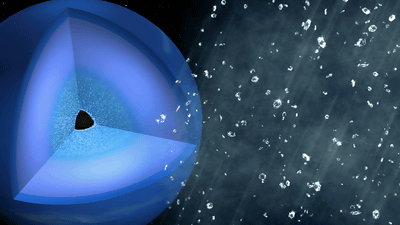'Ice XXI' discovered, solid at room temperature

The general idea of ice is that it melts and turns into water above 0 degrees Celsius. However, an international research team led by the Korea Research Institute of Standards and Science (KRISS) has now confirmed the existence of ice that becomes solid at room temperature. The team has named the crystalline structure of ice they discovered 'ice XXI.'
Multiple freezing–melting pathways of high-density ice through ice XXI phase at room temperature | Nature Materials
XFEL: Warm ice in the X-ray laser
https://www.xfel.eu/news_and_events/news/index_eng.html?openDirectAnchor=2828&two_columns=0
There are many variations in the crystalline structure of ice, each of which is given a name with a Roman numeral, such as 'Ice I,' 'Ice II,' 'Ice III,' etc. The newly discovered Ice XXI was observed under a high-pressure environment of 2 gigapascals, which is about 20,000 times the normal air pressure.
Ice XXI was observed in an experiment using the European XFEL X-ray free electron laser facility at the German Electron Synchrotron Research Institute (DESY) and DESY's PETRA-III synchrotron radiation facility.
The researchers placed water between two diamonds and rapidly increased the pressure at 120 gigapascals per second to create a 2 gigapascal environment. They then released the pressure over the course of one second. They then captured images of this process every millionth of a second using the X-ray flash of the European XFEL to observe the changes in the water's crystalline structure.
The diagram below summarizes the observation results. It shows that ice XXI is forming as the pressure increases. Furthermore, ice XXI is in a 'metastable' state, meaning it can only exist temporarily.

The European XFEL high energy density device used in the experiment is below.

The research team's group photo also shows the inside of the device.

Rachel Husband, a member of the research team, said, 'These results suggest the possibility of more high-temperature metastable ice layers and transition pathways, which could provide new insights into the composition of icy moons.' He emphasized the results of Ice XXI.
Related Posts:
in Science, Posted by log1o_hf







